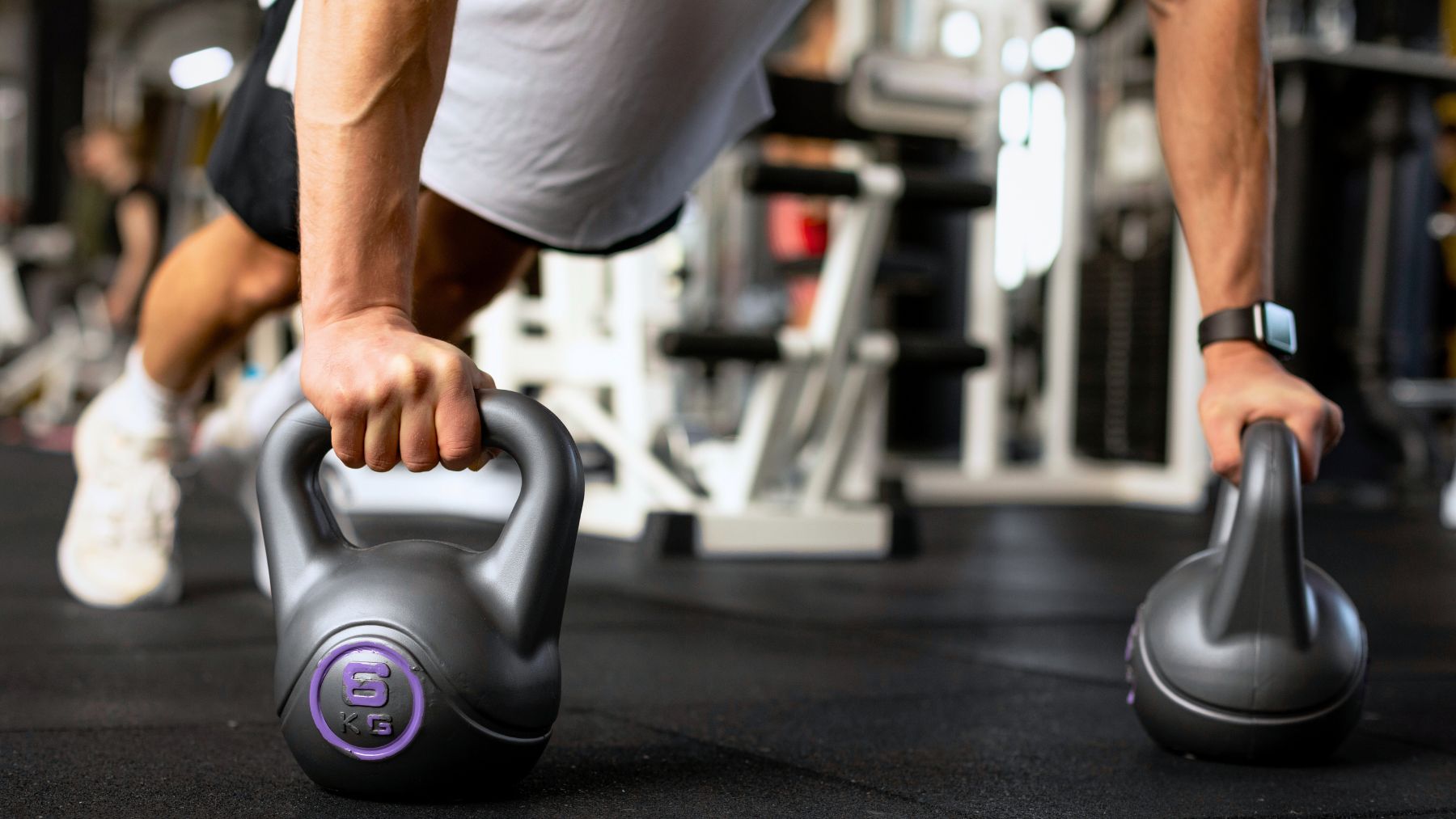Finding time for a workout isn’t always easy. Between work, family, and everything else on your plate, strength training often gets pushed aside. However, there’s one exercise that stands out for its full-body benefits, and it requires just a few minutes.
Thrusters—a move that combines a squat with an overhead press—target multiple muscle groups while also raising your heart rate. Elizabeth Shaw, M.S., RDN, CPT, a certified personal trainer and nutrition expert, points to thrusters as the best strength-training choice when you’re pressed for time. Here, we’ll break down what makes this exercise so effective, how to do it correctly, and tips to keep the movement safe and sustainable.
Why thrusters are the best exercise for busy people
Thrusters pack a lot into one fluid motion. You begin with a squat, engaging your glutes, quads, and hamstrings, then rise into a press that challenges your shoulders, arms, and core. This sequence works nearly every major muscle group, from your posterior chain to your upper body, while demanding core stability to maintain balance.
Another advantage is how they spike your heart rate by engaging major muscle groups and smaller stabilizers simultaneously. This full-body demand increases oxygen consumption, forcing your cardiovascular system to work harder. As a result, even a brief set delivers a dual benefit: building strength while improving cardiorespiratory fitness.
You can perform thrusters with dumbbells, kettlebells, or even just your body weight. They can be added into a short circuit, performed on their own in quick bursts, or scaled for intensity by adjusting weight and speed. Research indicates that compound exercises, such as thrusters, help maintain muscle mass, strengthen bones, and support healthy aging.
How to do thrusters safely
Because thrusters are a compound movement, doing them correctly ensures you maximize the benefits and avoid unnecessary strain. Keep these tips in mind:
- Start light: If you’re new to strength training, begin with body weight only or very light dumbbells. This allows you to learn the movement pattern before adding load.
- Focus on squat depth: Lower until your thighs are at least parallel to the ground, but avoid letting your knees collapse inward. Drive through your heels as you rise.
- Engage your core: A strong core stabilizes the spine and protects your lower back. Brace your abdominal muscles before each rep.
- Control the press: Don’t rush the overhead movement. Extend your arms fully without locking your elbows, and avoid arching your back as the weights go overhead.
- Breathe consistently: Inhale on the squat, exhale as you press upward. Proper breathing supports stability and endurance.
- Warm up first: Light cardio and dynamic stretches help prepare muscles and joints for the demands of the thruster.
- Progress gradually: Add weight or increase speed only when your form is solid and consistent.
Paying attention to form turns this from a challenging move into a safe, sustainable exercise you can return to often. Thrusters are proof that you don’t need hours in the gym to make progress. They deliver efficient results, challenge your entire body, and can fit into even the busiest schedule.

